How to Grow Cosmos For Your Cut Flower Garden From Seed Indoors
Have you dreamed of growing a garden full of gorgeous cosmos in your cut flower garden? I’ll share my tips on growing cosmos from seed indoors, how to transplant them into the garden, and much more.
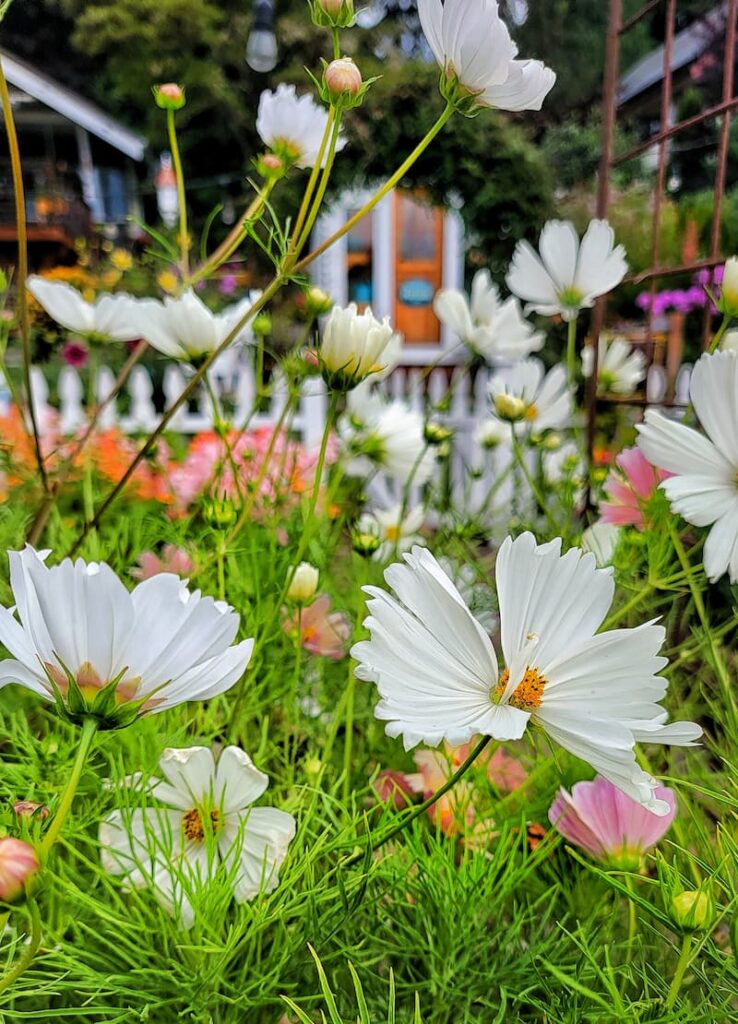
Cosmos are an incredibly easy flower to grow in the garden which makes them perfect for beginning gardeners.
They are also an extremely productive plant per square foot in the cut flower garden. The more you cut, the more they bloom. This means that even if you don’t have much space to grow cut flowers, you will still be able to grow cosmos for your summer flower arrangements.
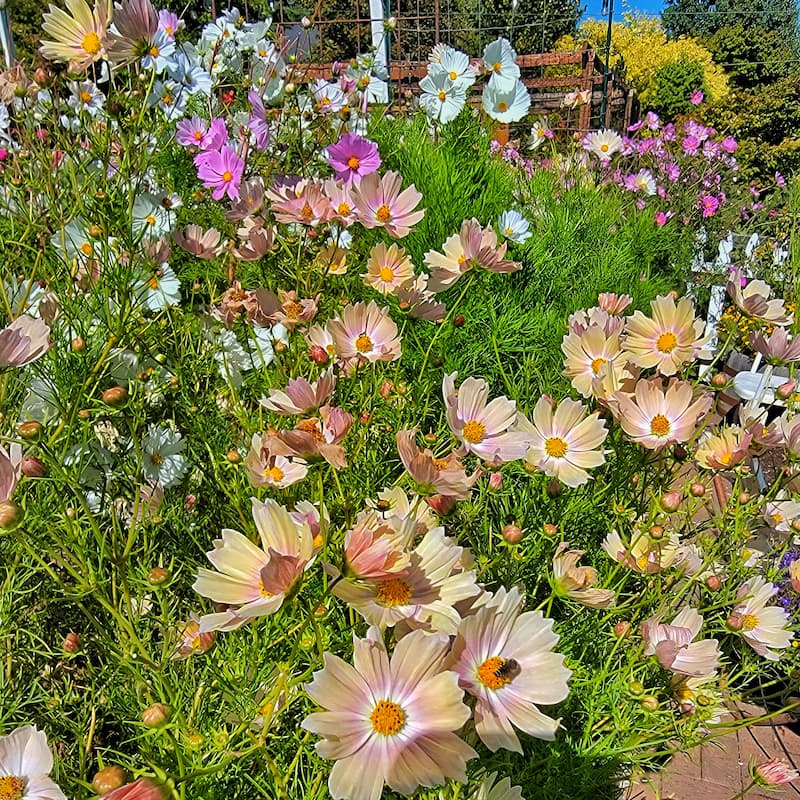
The Perfect Cutting Flower
Cosmos are the perfect cut flower for any summer or early fall bouquet.
- There are so many colors and mixes available to choose from when you grow your cosmos from seed.
- These daisy-like blooms have feather-like foliage that adds interest to any flower arrangement.
- Their flowerheads can be cup or bowl-shaped and this plant can reach up to 6 feet tall.
- They are a low-maintenance plant that attracts bees, butterflies, and birds to your garden.
- The more you cut, the more they produce.
As an Amazon affiliate, I earn from qualifying purchases at no extra cost to you. My blog contains other affiliate links as well for your convenience. Click here to read my privacy policy.
I’m a self-taught hobby gardener. Everything I share on my blog is my opinion and what has worked for me.
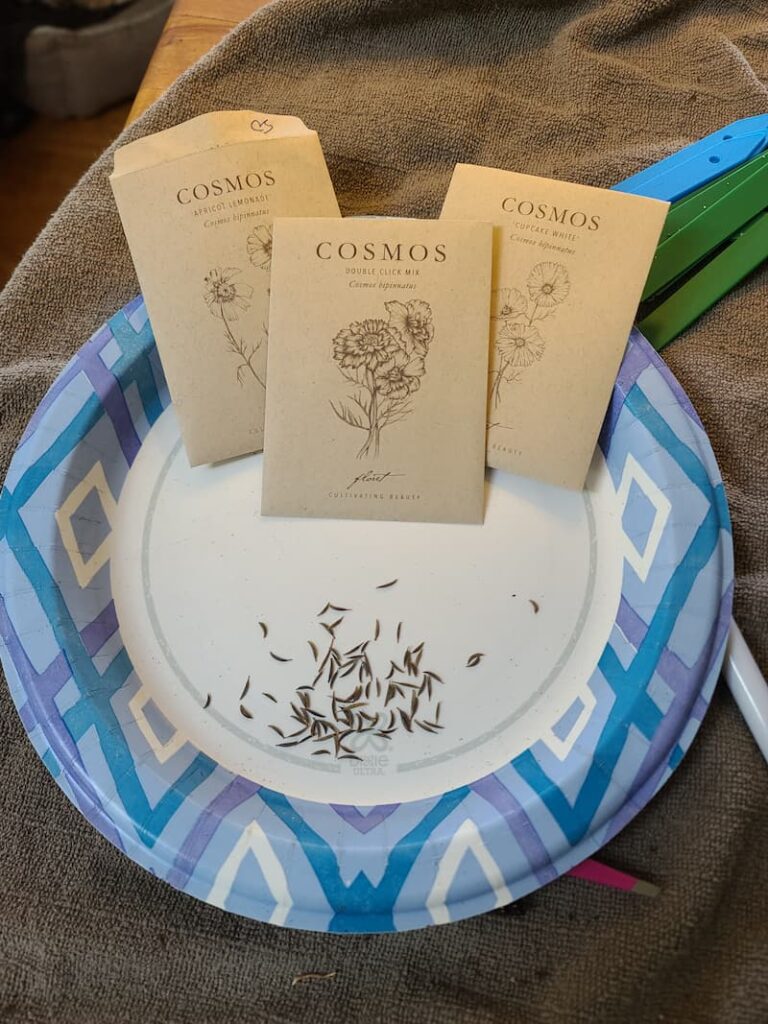
When to Grow Cosmos from Seed
When starting cosmo seeds indoors, sow seeds 4-6 weeks before the last frost of the season. To see when you’re average last frost date is, click HERE.
If you sow the seeds earlier than the recommended time frame, the seedlings will quickly outgrow their pots before the weather has warmed enough to put them out into the garden.
Cosmos can also be sown directly in the ground as soon as the threat of freezing has passed.
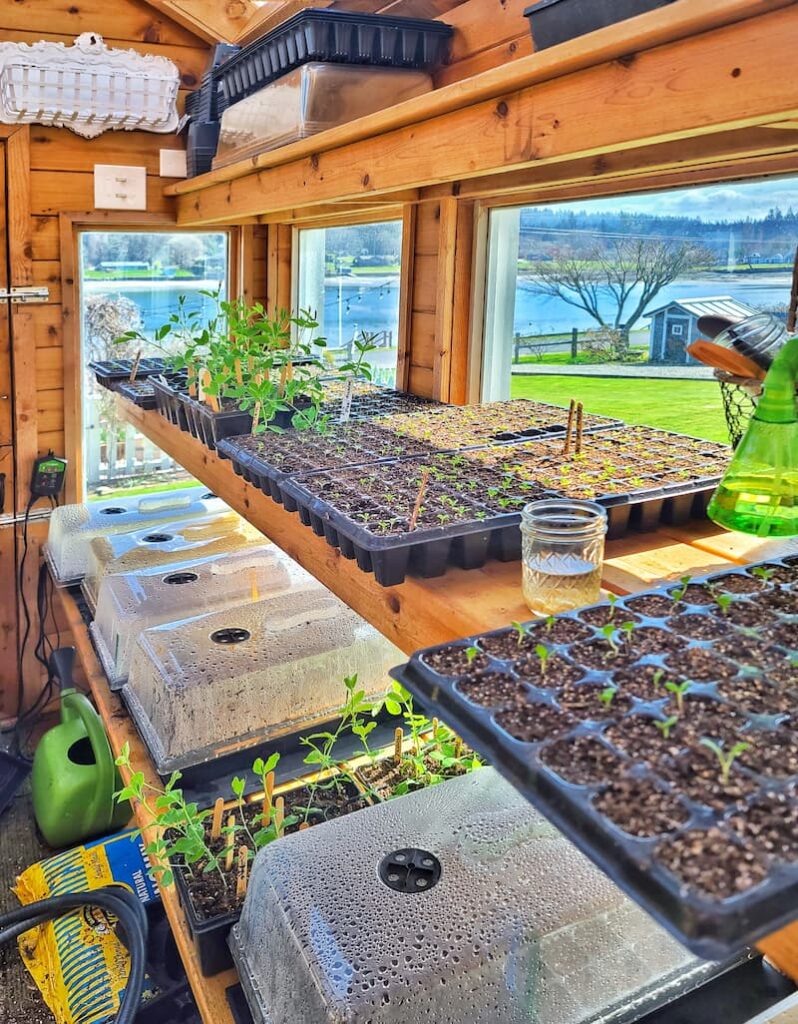
Supplies to Sow Seeds
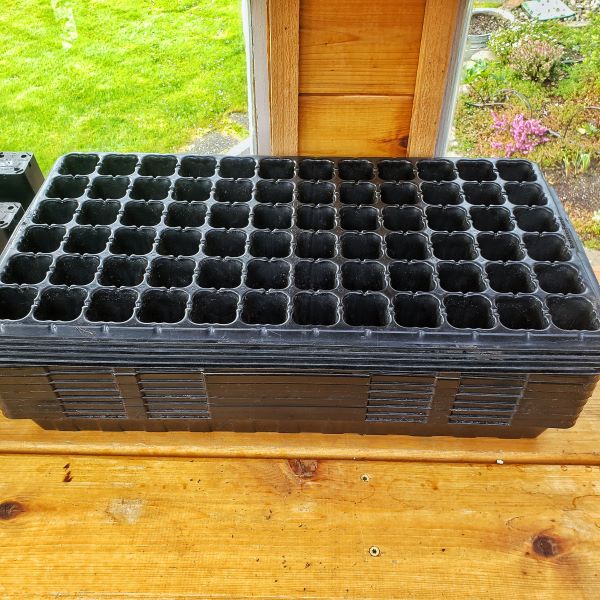
Steps for Sowing Cosmos
Step 1 – Choose Container
Seed starting containers should be clean and have drainage holes. For several container options, you can read my blog post Supplies Needed for Seed Starting.
I use cell trays and plastic pots for my seed containers.
For more information regarding how to clean your used containers can be found on my post Seed Starting 101 – Growing a Cut Flower Garden Series.
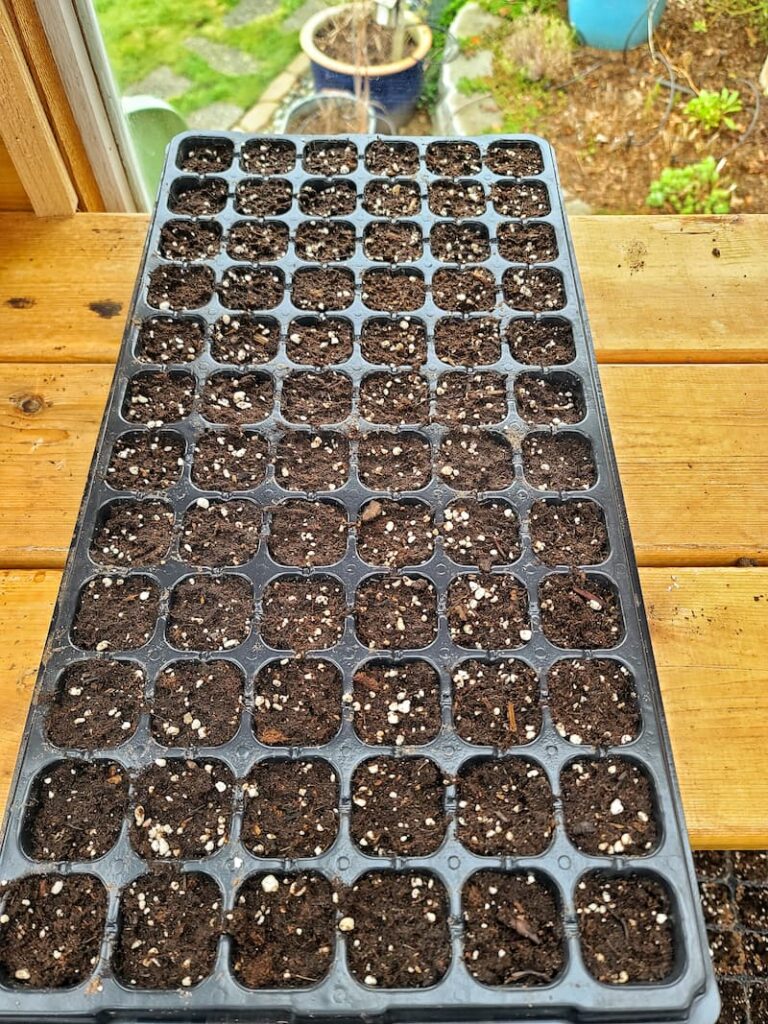
Step 2 – Fill Containers with Soil
Use a quality seed starter potting mix when sowing your cosmos seeds. Before adding it to the container, the soil should be moistened until it’s thoroughly damp but not soaking wet.
Fill the container to the top with soil. As you go, tap firmly against the table or shelf to make sure the soil settles and to prevent air pockets in the containers.
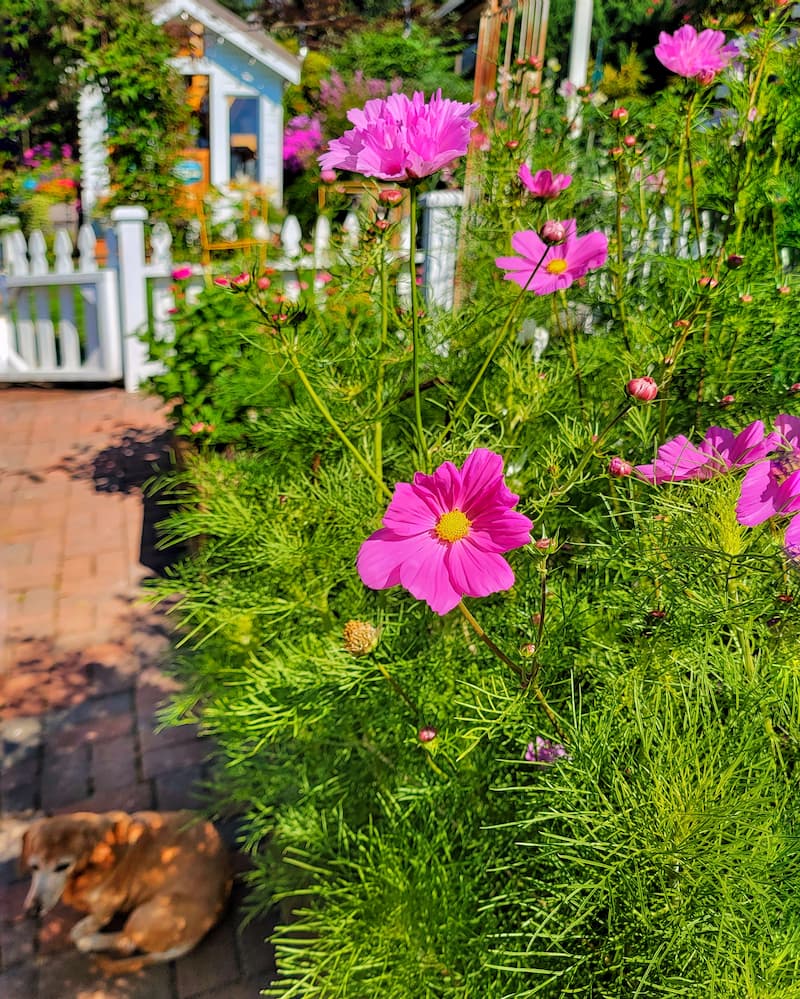
BENEFITS TO USING A SEED STARTING MIX
- Helps the seeds to germinate quickly
- Holds the moisture in the container
- Allows the roots to penetrate down into the garden soil quickly
You can make the mix go even further by filling the bottom half of the container with regular potting soil and then filling the rest of it with the seed starting mix, where the seeds are going to be placed.

Step 3 – Label or Tag
Label the container with the name of the variety of plants and the date planted.
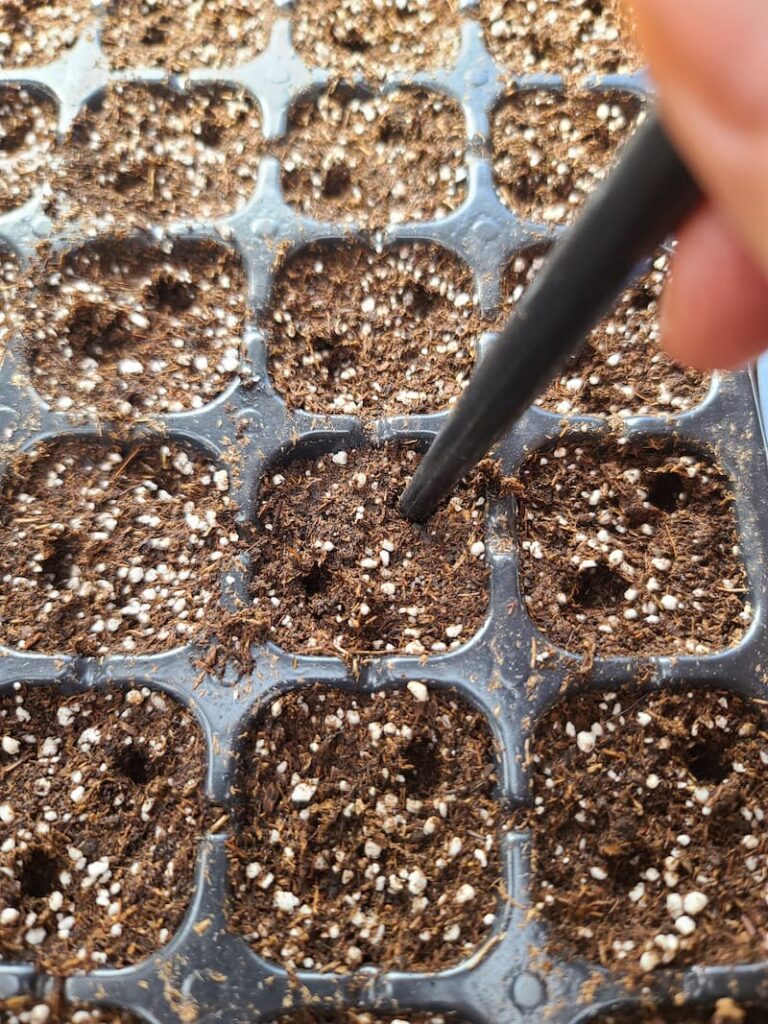
Step 4 – Sow the Seeds
Sow 2 seeds per container or cell by creating a 1-half-inch hole into the soil, in 2 opposite corners. You can use a pencil, dibbler, or even your finger to make a hole.
Add a light dusting of seed starter potting mix or vermiculite, covering the seeds.
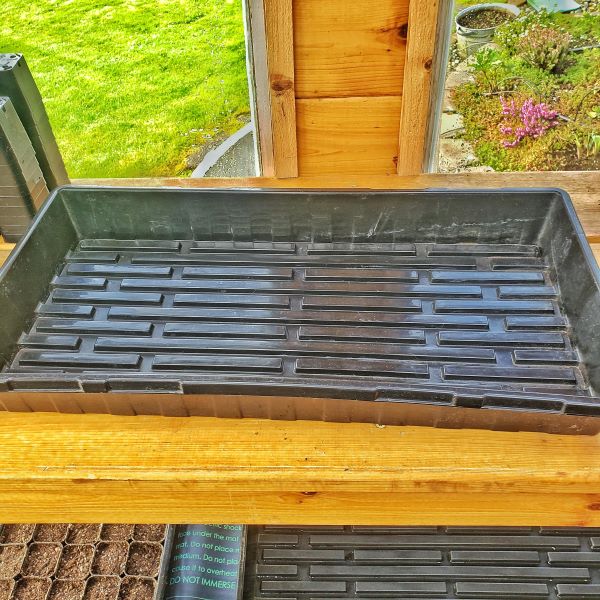
Step 5 – Bottom Water
After sowing the flower seeds, set the container in a drainage tray with an inch of water in the bottom, removing once the soil surface is evenly moist. It’s important not to let the container sit in the water for more than an hour.
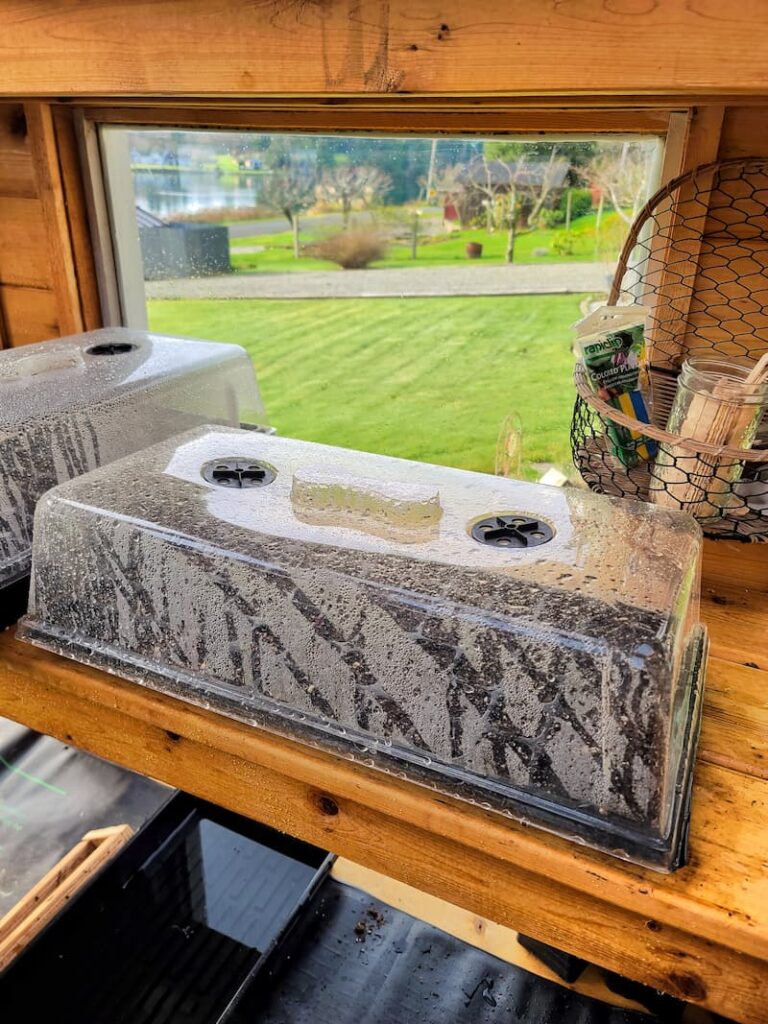
Step 6 –Place on a Heat Mat and Cover
Place the container on a heated mat or in a warm corner in your house, and cover it with a clear plastic dome. This will help speed up the seed starting germination process.
Step 7 – Pick the Right Location
Keep in a light and bright space such as a greenhouse or sunroom. If you don’t have that option, keep the seedlings under a grow light.
Step 8 – Continue Watering
Continue to check the soil moistness every 2-3 days. Bottom water again as needed.
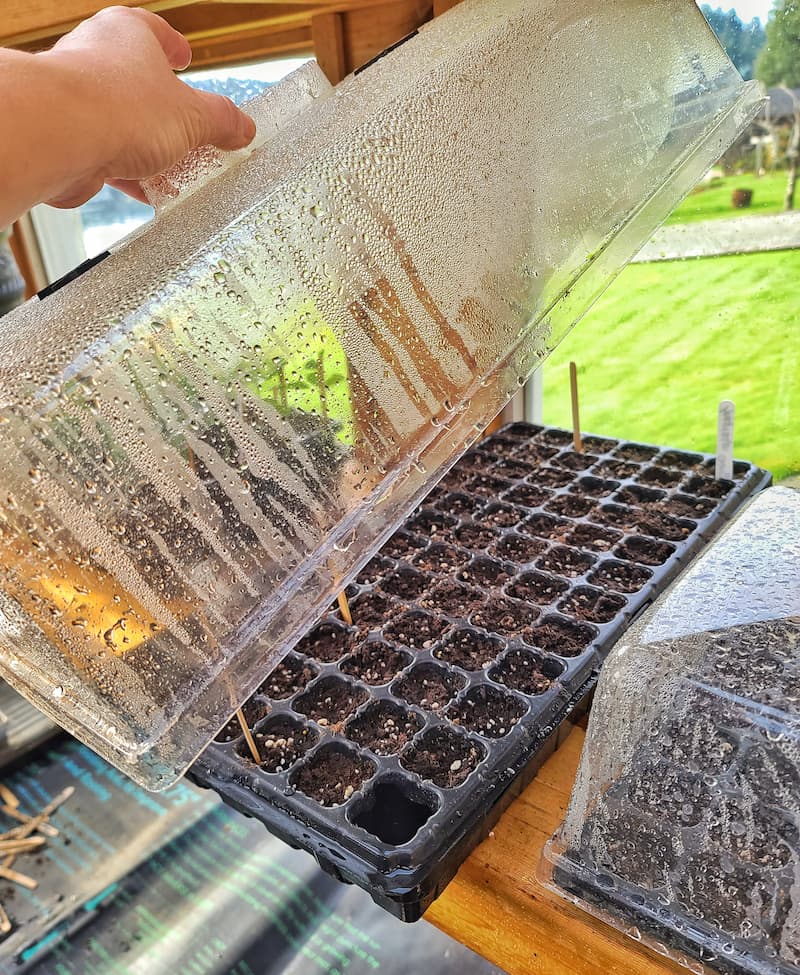
Once the Cosmo Seeds Have Germinated
Step 1 – Remove Heat Mat and Uncover the Container
Check the container daily. Once the seeds have germinated and the sprouts are visible, remove the clear dome lid and remove the seedlings from the heated mat.
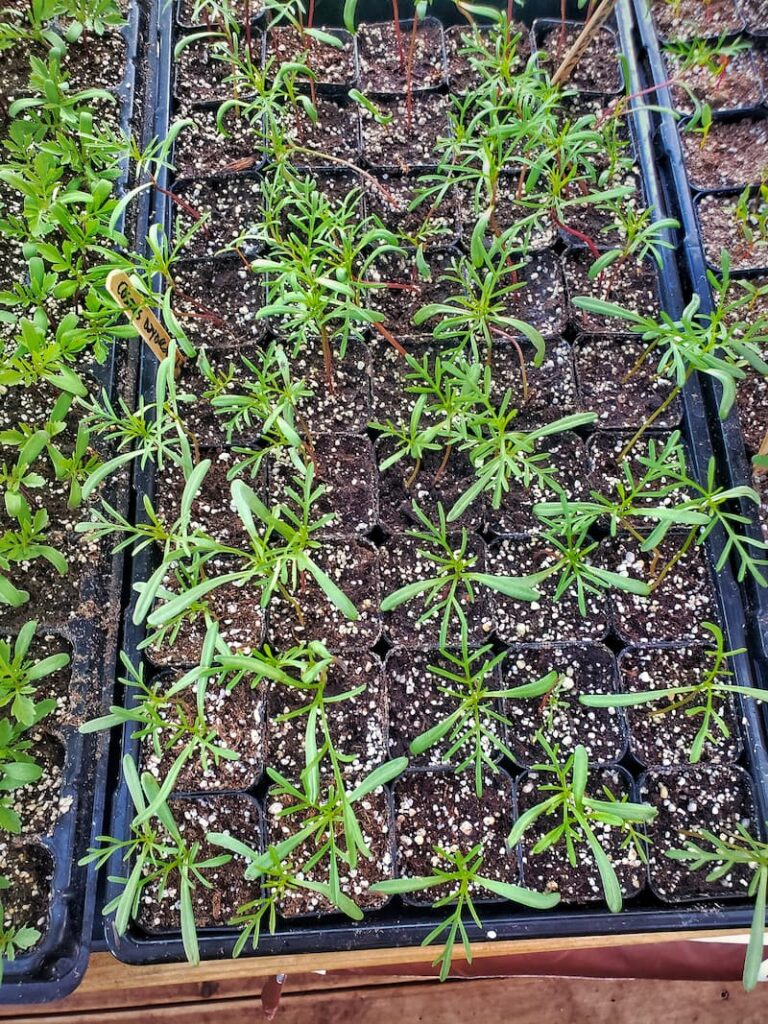
Step 2 – Continue to Water When Needed
Check the seedlings on a daily basis to make sure that the soil doesn’t dry out.
The very first leaves that appear on the plant are called cotyledons. Be sure to bottom water your seedlings until you see the first real leaves that appear after the cotyledons.
Once those second sets of leaves appear, water with a gentle spray from a watering can or hose when needed, usually every 1-2 days.
Step 3 – Transplant if Needed
If your seedlings start to outgrow their containers before they’re ready to be planted outdoors, you’ll need to transplant them into a larger container while still growing inside. It’s important to give the roots more room to grow.
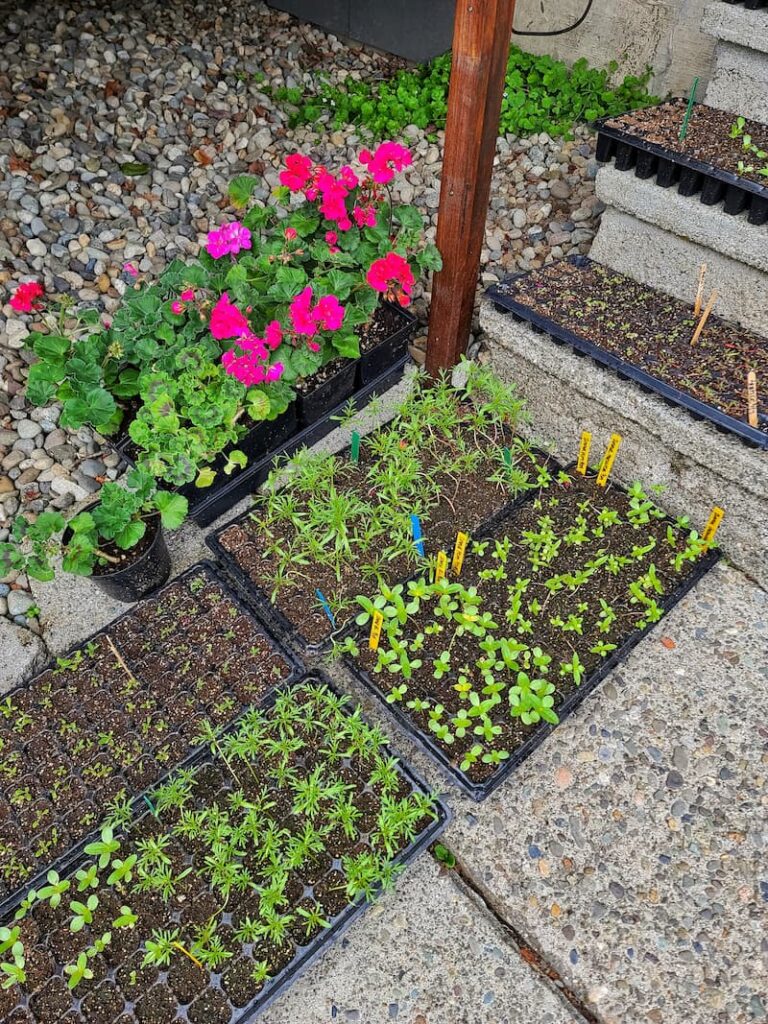
Step 4 – Hardening Off the Cosmos Seeds
After all danger of frost has passed, you can begin “hardening off” your plants before transplanting them into the garden.
Don’t skip this process! Your plants will go into shock by the sudden change in temperature.
Set the containers in a sheltered spot outdoors, increasing the amount of time they spend outside each day, over the course of a week or two. I usually start with 2-3 hours the first day.
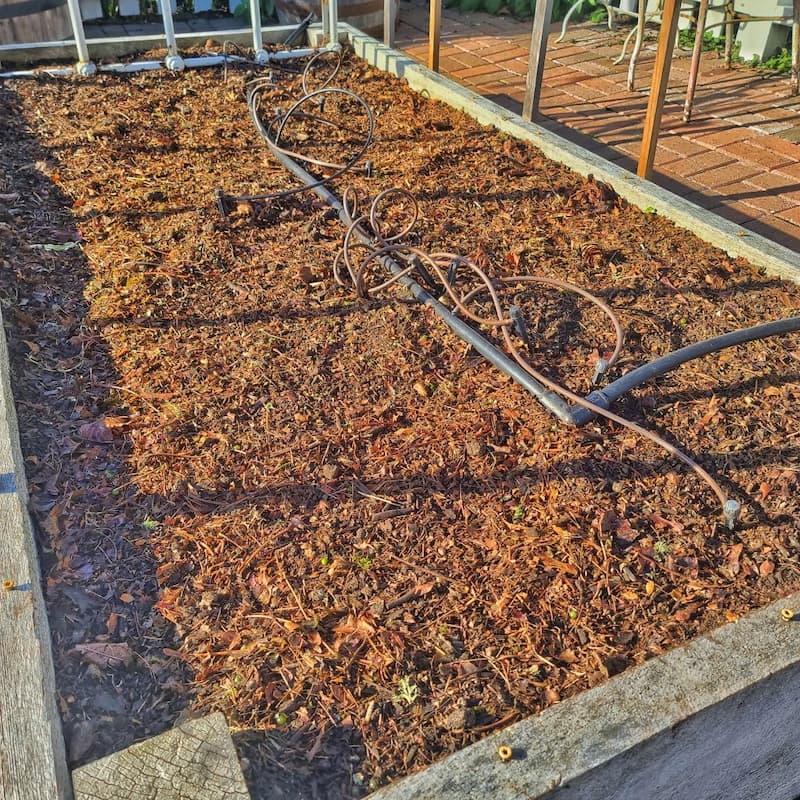
Preparing the Garden Beds
Cosmos can survive in even poor soil conditions.
Fertilizers can actually impact the plants negatively by growing more foliage and producing fewer blooms.
When planning the location of your garden beds, keep in mind that the cosmos love the full sun. This plant can be invasive in the southern states so it may be a better choice to plant cosmos in pots and containers.
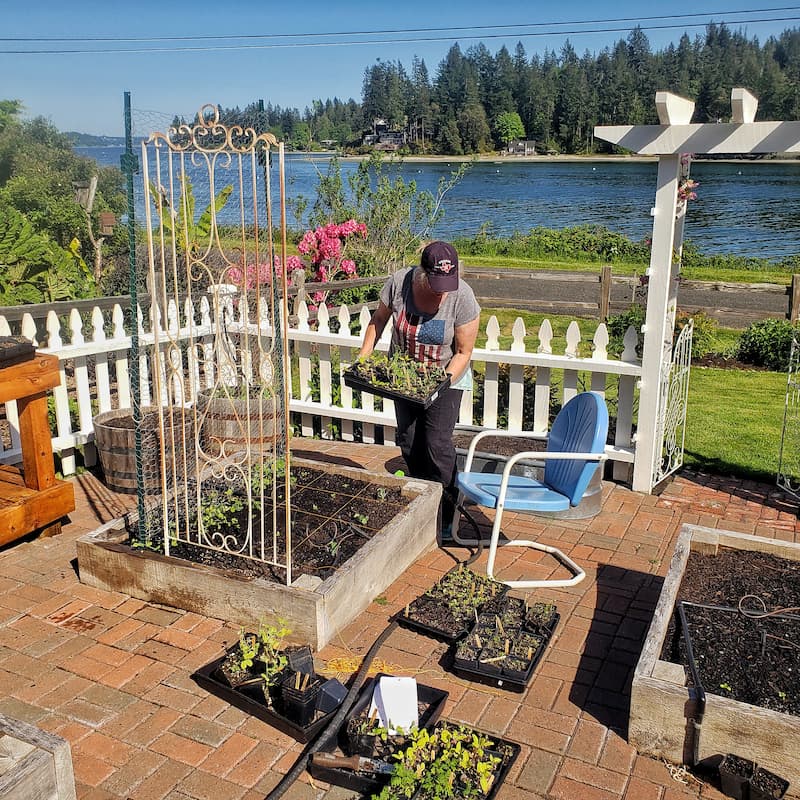
Transplanting Cosmo Seedlings to the Garden
Once the cosmo plants are acclimated to the extreme temperatures, transplant the seed starts to the garden once the threat of frost has passed.
Cosmo plants get very bushy and need extra room to spread out, so space plants are at least 12 inches apart.
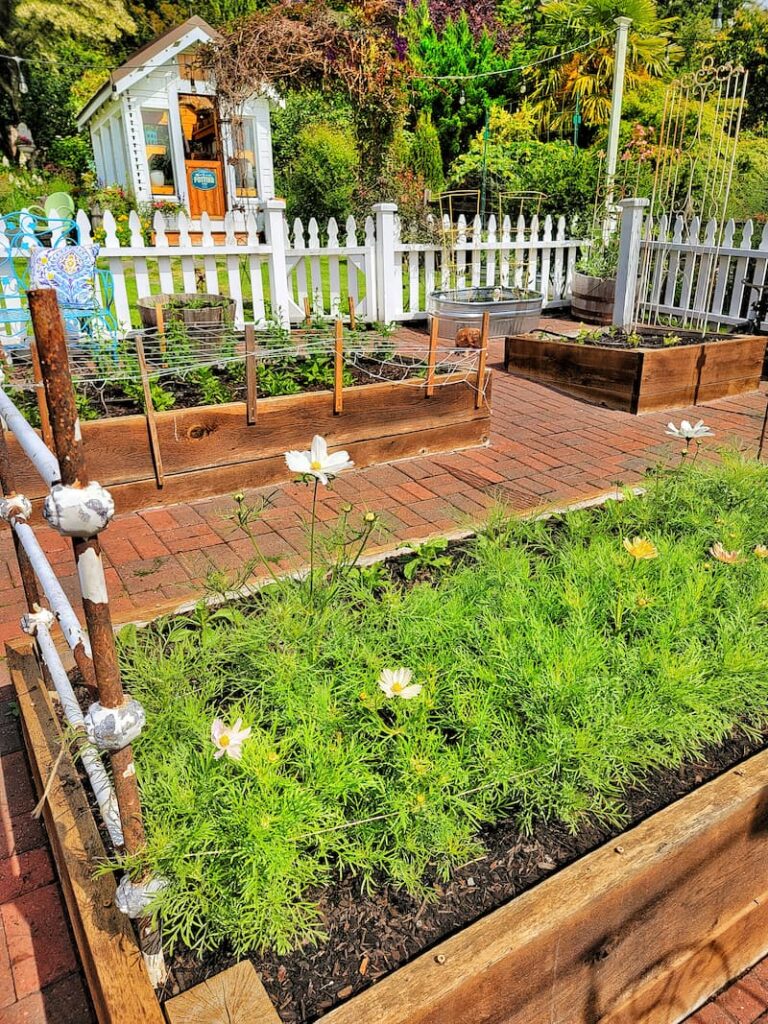
Caring for Cosmos
Support Plants Early
Once in the ground, the cosmos will grow quickly, so be sure to stake them early, while they are still young.
I used the corral method to support this bed of cosmos. Tie twine around the entire batch of cosmo plants to each end of the raised bed. I used a vintage headboard to tie the twine.
As the plants grow taller, add another layer of twine to keep the wind and hard rains from damaging the cosmos.
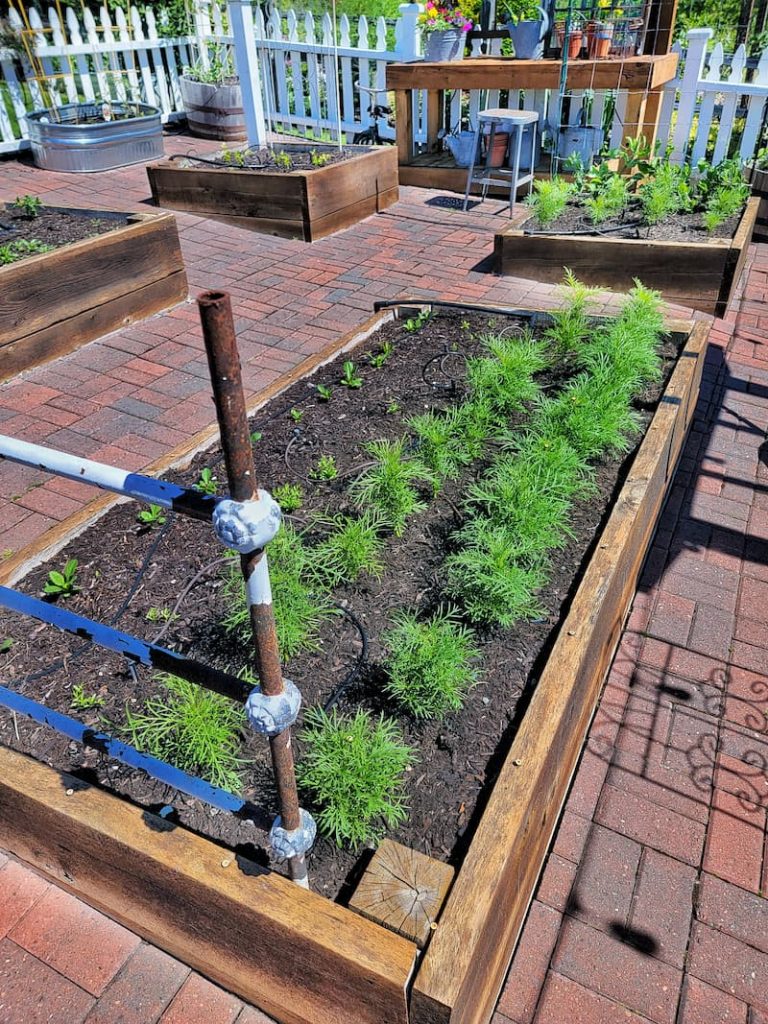
Watering
Create a plan to make sure your cosmos will be watered regularly in the garden. I set up soaker hoses in the raised beds as soon as they’ve been transplanted to their new home in the garden.
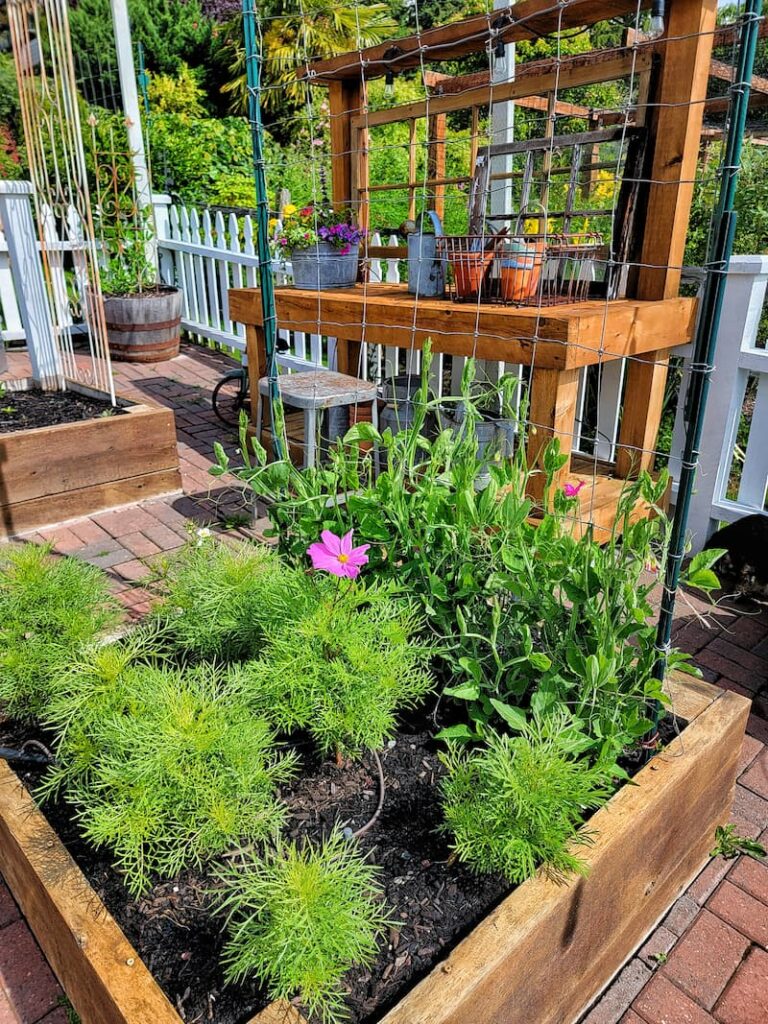
Pinching Cosmos Plants
Once the cosmos plants are 12 inches tall and have at least 3 sets of leaves on each stalk, cut 3-4 inches off the top of the plant, just above the leaf joint with sharp pruners. This signals the plant to send up multiple stems from below where the cut was made.
Pinching benefits plants for many reasons…
- Encourages the plant to actively branch from the base
- Promotes higher flower production
- Produces longer stems
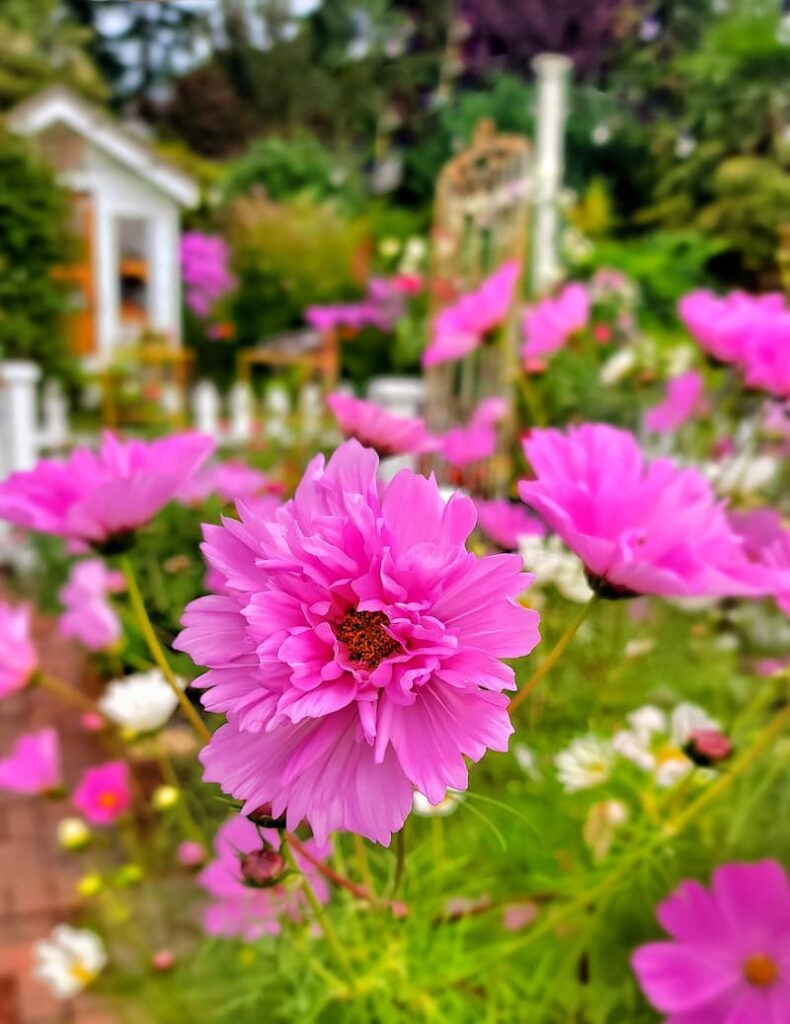
Prolonging Cosmos Blooms in the Garden
Consistently deadheading and harvesting your cosmos blooms will keep the plants from setting seed.
Deadheading
Deadheading is the process of trimming back the old flowers which encourages new growth.
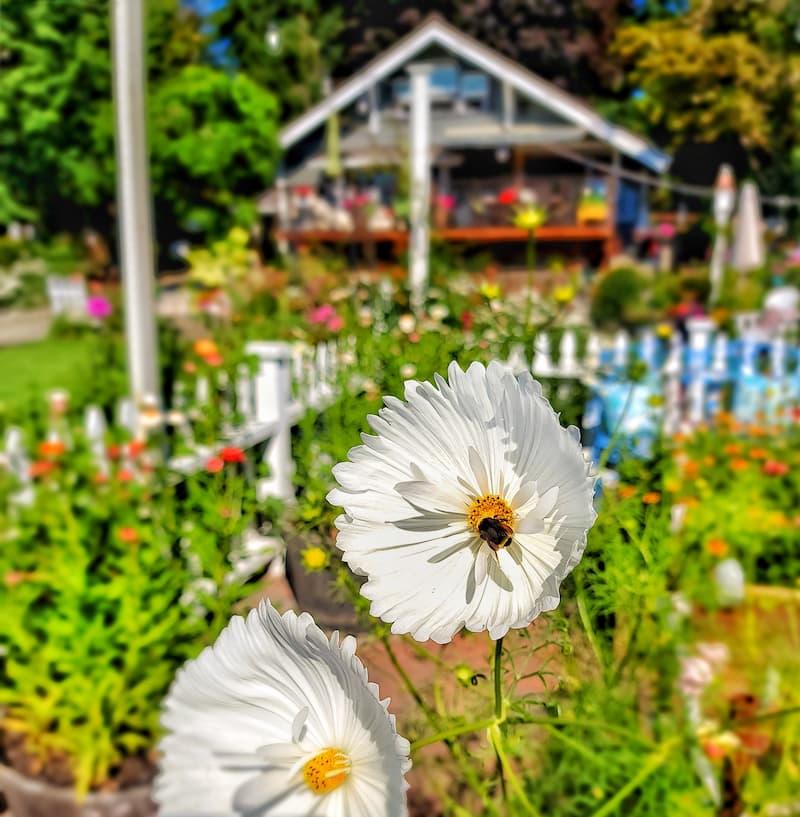
Harvesting
Individual blooms should only last about 4-6 days in the vase, but each stem has multiple blossoms that open over a period of a week.
Harvest when buds are cracking but haven’t fully opened in order to prevent insects from pollinating which will extend the vase life by a few days. Add flower preservatives to the water.
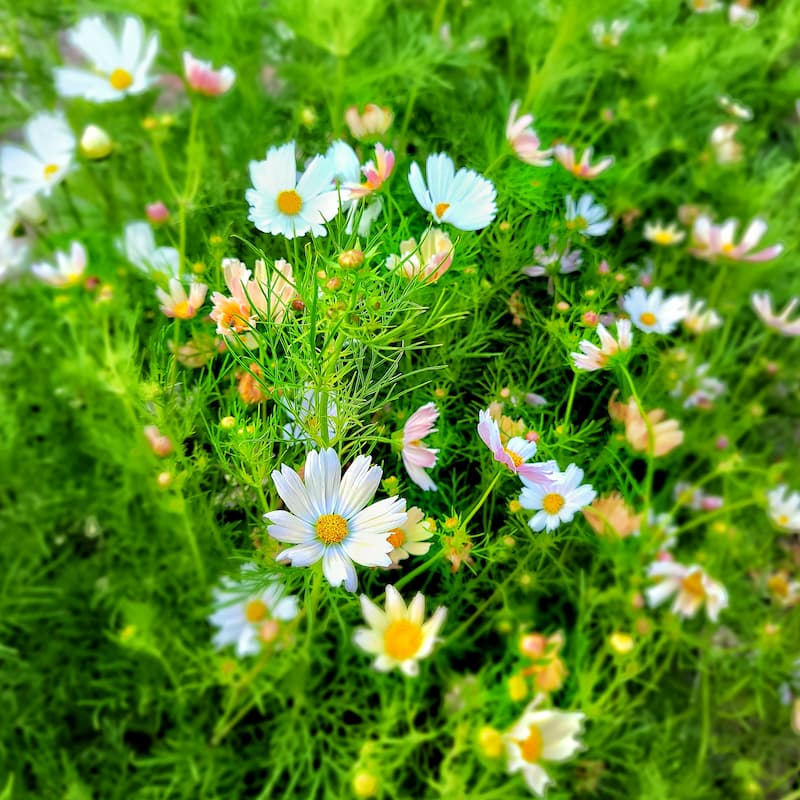
The Most Common Mistakes Made
Here are some of the most common mistakes made when growing cosmos.
- Forgetting to add support at the time of planting outdoors
- Adding fertilizer to garden beds with poor soil. This will result in less bloom production.
- Planting too close together without thinning them. This can create powdery mildew and crowding, which reduces the plant’s flower production.
- Not pinching the plants after they’ve reached 12 inches in height.
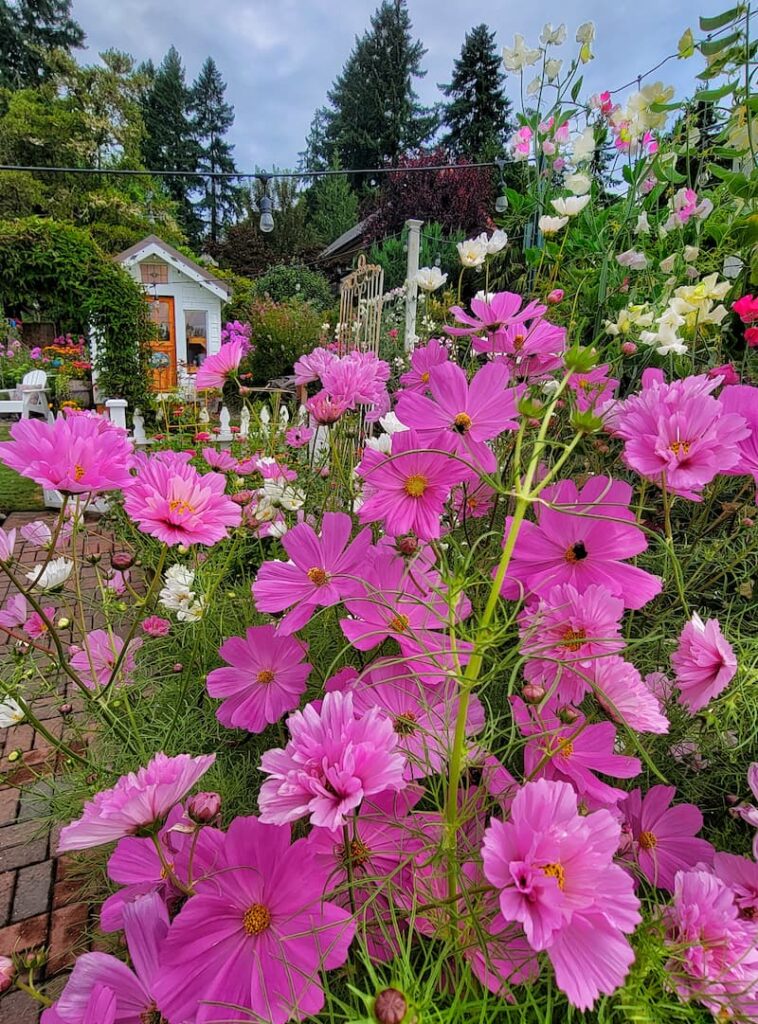
Do you grow cosmos or plan to add them to your garden this coming season? If so, what are your favorite varieties?
I hope these tips on growing cosmos from seed indoors have helped. I’d love to hear from you in the comments below.
Until next time,
Happy Gardening!

PIN AND SAVE ON PINTEREST
If you’ve enjoyed this blog post, please pin and share this on Pinterest.
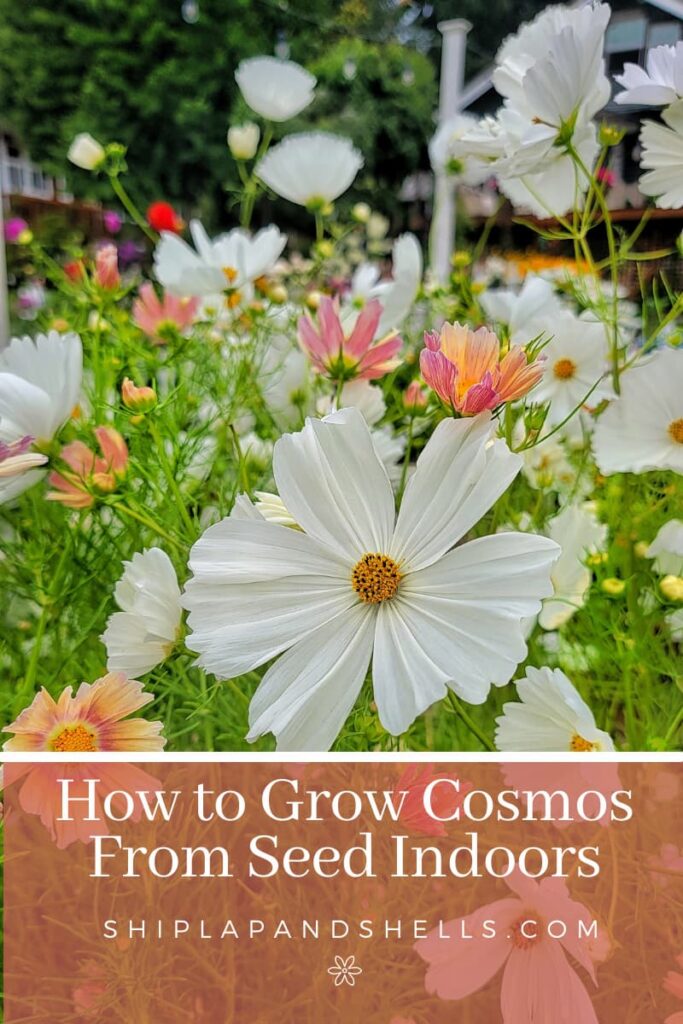
Let’s Connect on Social Media
- Follow me @shiplapandshells on Pinterest, Instagram and Facebook
- Join my Facebook Gardening Tips & Tricks Group.



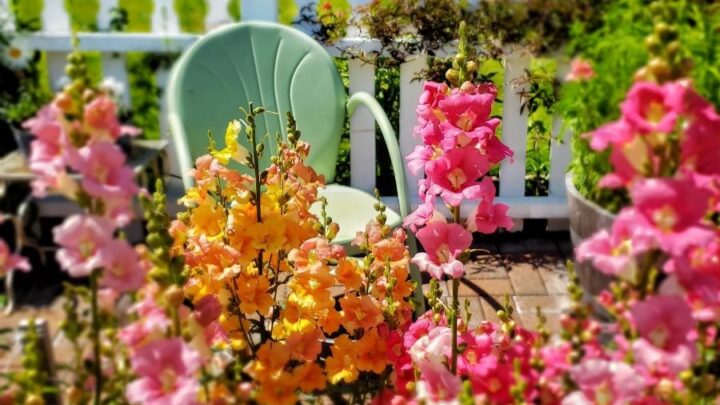

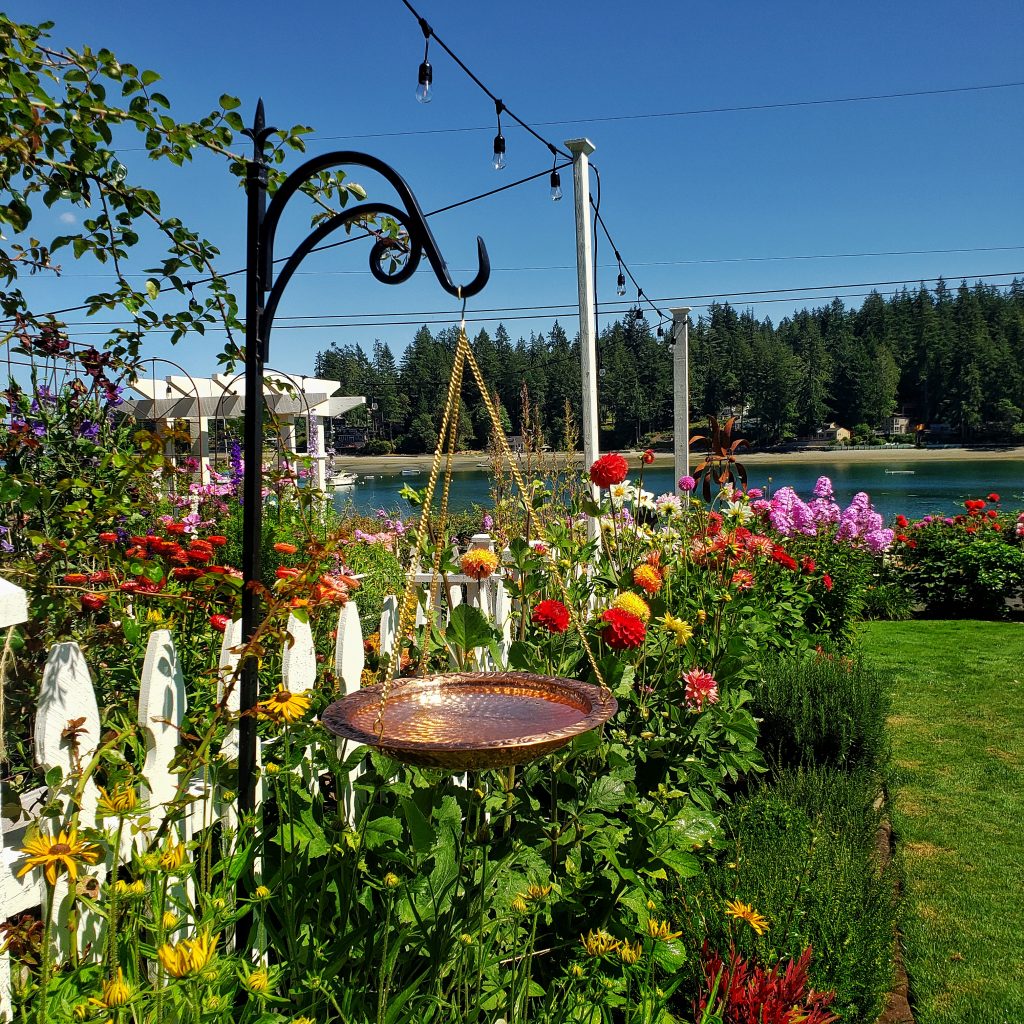
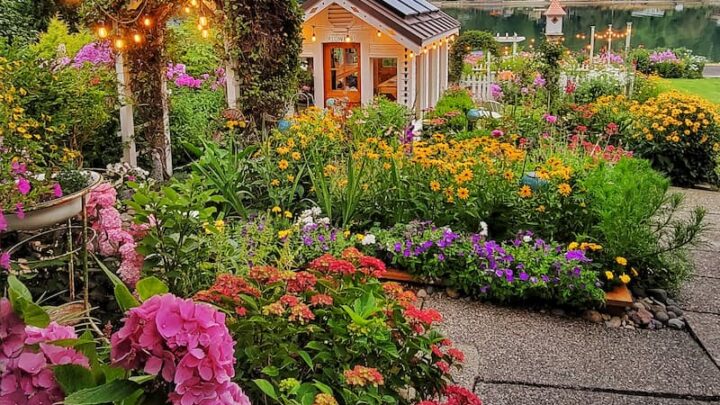
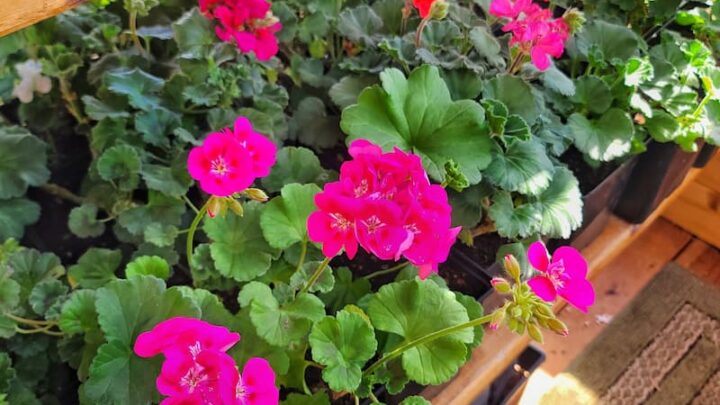

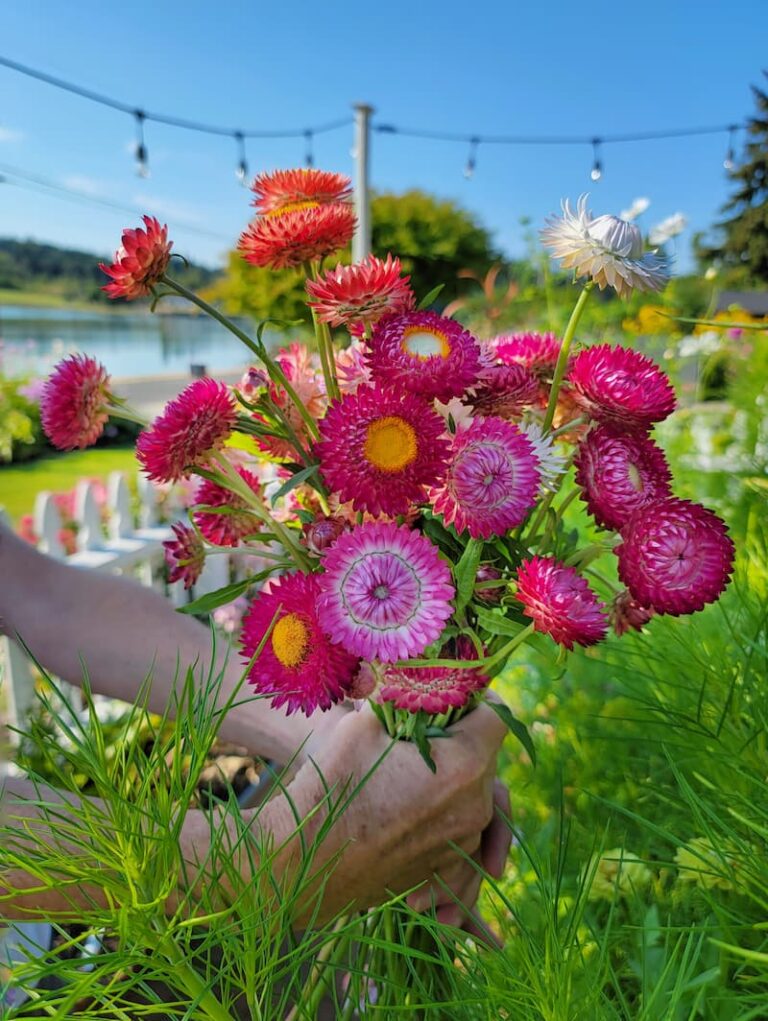
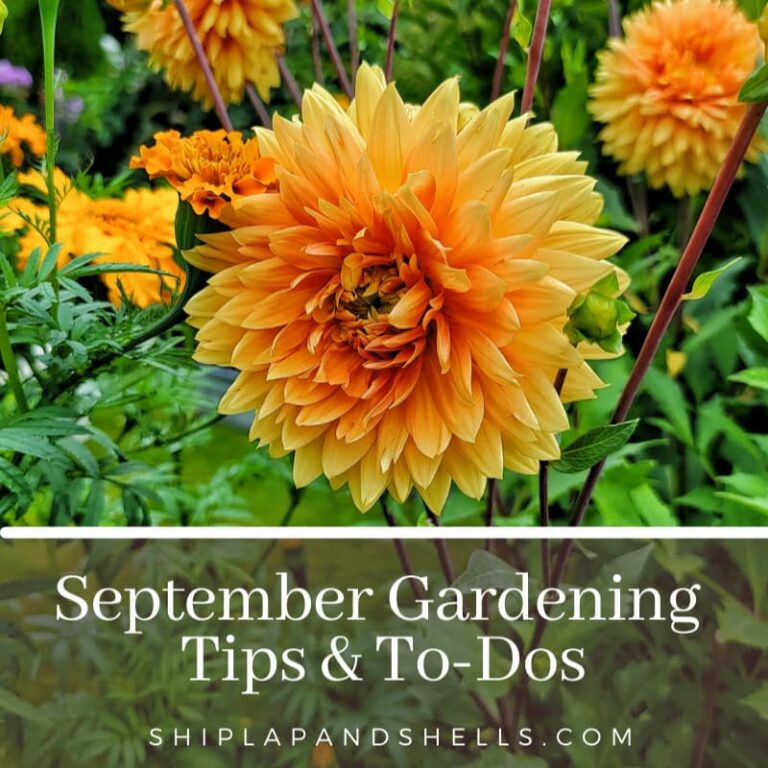
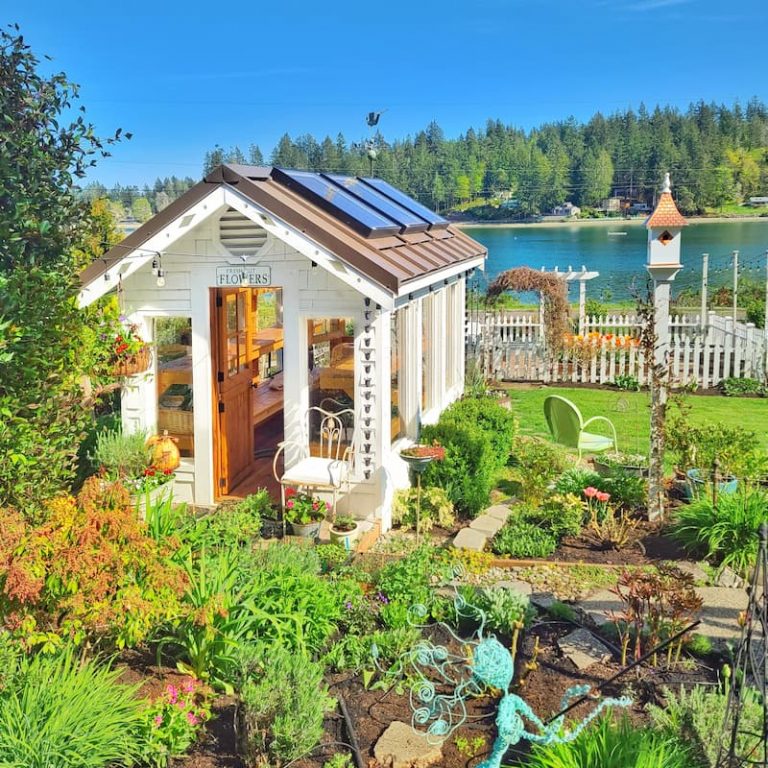

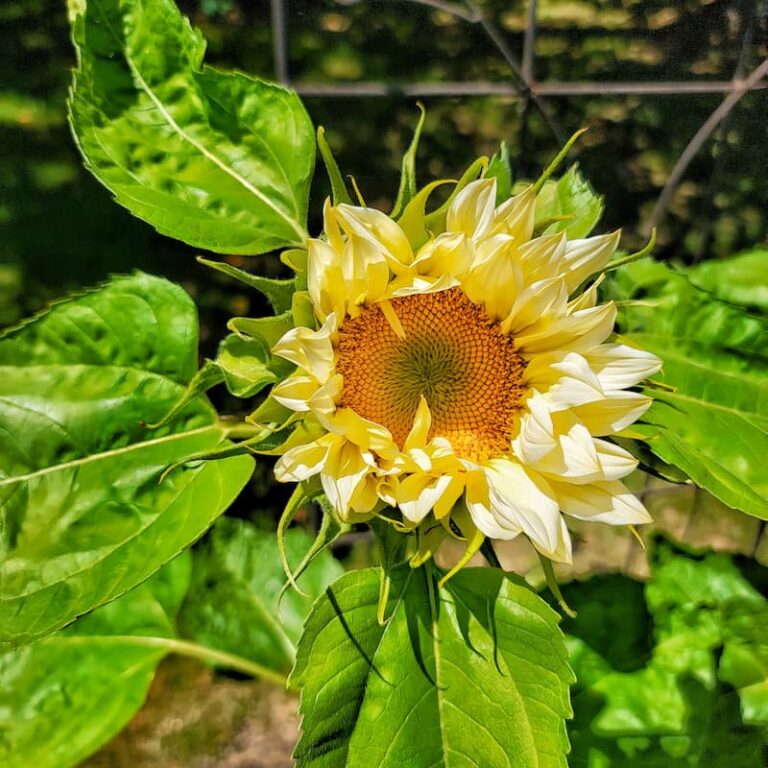
my favorite are the whites. I have a all white garden and they are the stars.Margaret
I love the white cosmos too! Especially the cupcake variety.
Ah I loe cosoms! I can’t wait to grow them again this year! THanks for sharing!